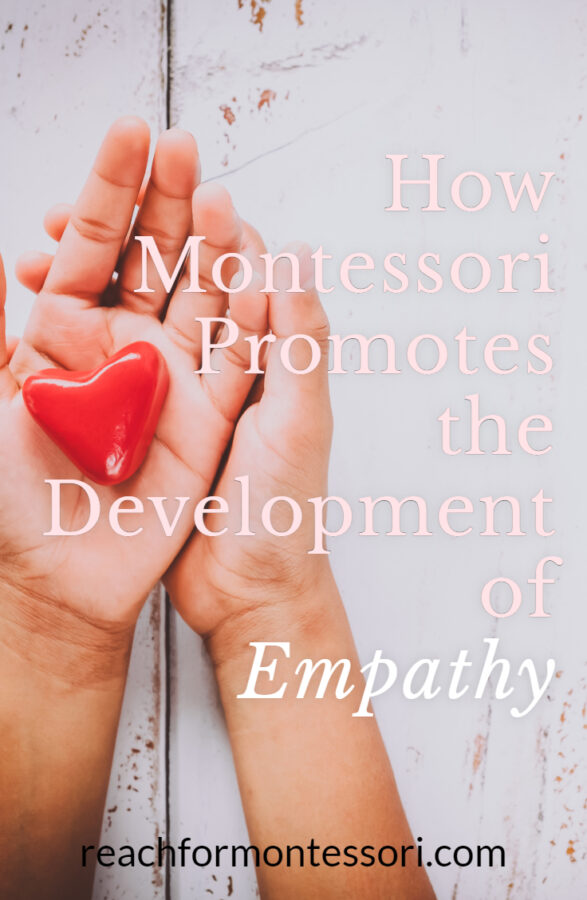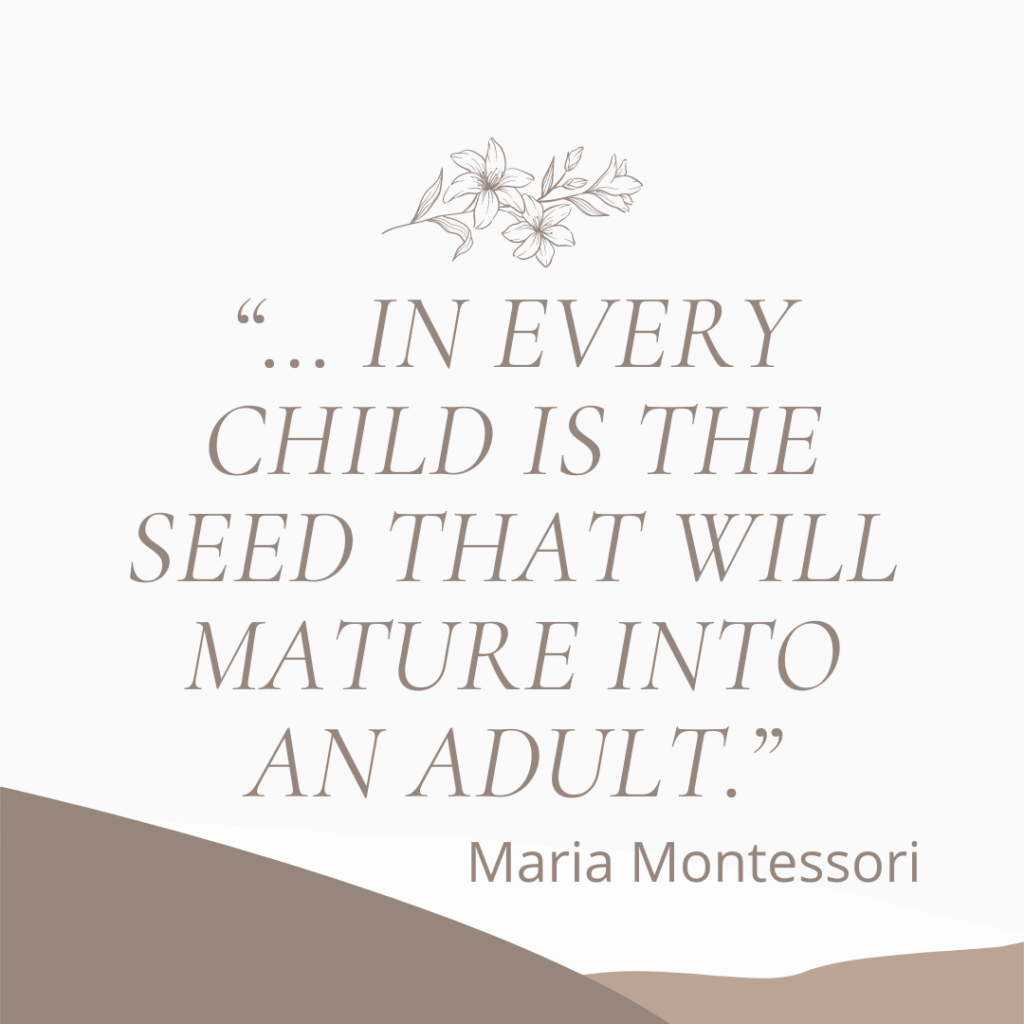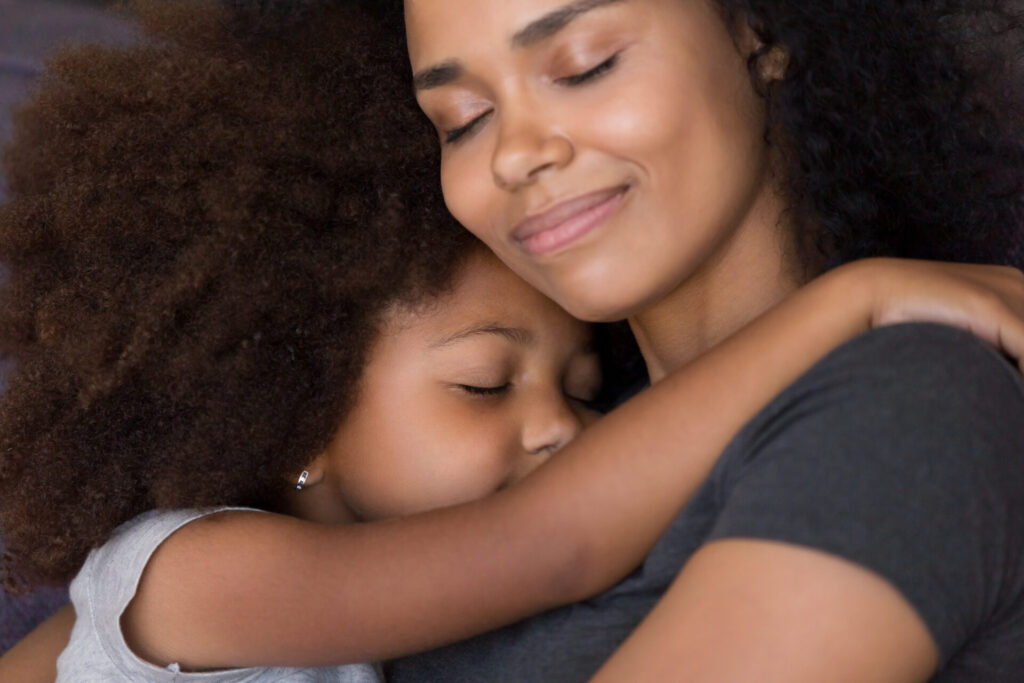In this article, you will learn about social and emotional learning and how it relates to the development of empathy. You will also learn how to teach kids empathy the Montessori way.
At the end of the article, you will get recommendations on empathy building books to read with your child.
We all want our kids to succeed academically. Totally understandable. Unfortunately, some mainstream methods of teaching kids have placed too much emphasis on making the grade.
In doing so, these pedagogies have inadvertently ignored another, arguably more important, aspect of teaching little ones. This too-often overlooked element of early childhood education is sometimes called social and emotional learning, or SEL.
(This post contains affiliate links. Purchasing from these links costs you nothing extra, but sends a few cents our way for website upkeep.)

What Is SEL?
SEL, or social and emotional learning, is the concept of guiding children toward an understanding of their own emotions as well as the feelings of others and teaching them how to respond to these emotions with respect and intelligence.
Although SEL is not an exclusively Montessori concept, many would argue it has its roots in Maria Montessori’s belief that to effectively teach our little ones, we must acknowledge the child as a whole, not just his or her cognitive abilities.
Empathy: The Primary Building Block of SEL
The importance of empathy in a child’s social and emotional development cannot be overstated. The ability to understand and honor the feelings of others helps little ones develop and maintain relationships, become more aware of their own emotions, and develop self-esteem.
And that’s just the impact empathy has on the empathizer. If you’ve ever been on the receiving end of empathy, then you know it has a powerful effect on the recipient as well.
In an age characterized by cyberbullying, school shootings, and workplace violence, empathy has never been more important. Montessori herself believed that by teaching children empathy, we can, quite literally, change the world:
“An education capable of saving humanity is no small undertaking: it involves the spiritual development of man, the enhancement of his value as an individual, and the preparation of young people to understand the times in which they live.” —Dr. Maria Montessori, Education and Peace

How does Montessori teach kids empathy?
In Montessori, teaching empathy to kids is a multi-pronged process. In essence, we teach empathy by doing three things: showing respect, honoring feelings, and demonstrating compassion.
Showing Respect
As with most things, teaching empathy requires modeling it. This begins with showing respect for the child and his or her emotional state.
It should go without saying, yet many traditional ways of teaching and even parenting young children neglects this fundamental tenet. In the Montessori pedagogy, however, respect is paramount.
At the core of this reverence for children is the belief that they are not inferior beings that need to be infused with wisdom, but rather complete and wise human beings in their own right who are naturally developing into the adults they were meant to be.
There are two Montessori quotes that embody this concept:
“… in every child is the seed that will mature into an adult.” —Dr. Maria Montessori, The Theosophist
“In the child is much knowledge, much wisdom. If we do not profit from it, it is only because of neglect on our part to become humble and to see the wonder of this soul and learn what the child can teach.” — Dr. Maria Montessori, The Theosophist
When children feel respected by their caregivers, they intuitively realize that they are in a safe place to express themselves and their feelings. This represents the beginning of empathy development.

Honoring Feelings
In our society, actions tend to be valued over emotions. This is particularly true in the Western world where productivity is hailed as the highest form of achievement.
The sad side effect of placing too much importance on “doing” and not enough on “feeling” is that we teach our children that feelings are meant to be hidden or suppressed. In reality, of course, the opposite is true.
In Montessori environments, caregivers help children learn to acknowledge their feelings by naming those feelings. Little ones are given words to describe powerful emotions like elation, anger, and sadness.
In naming these emotions, we normalize them and provide a space for them to exist rather than pushing them down or fearing them.
What does this have to do with empathy?
Before a child is able to comprehend the emotions of another, they must first be comfortable with their own.

Demonstrating Compassion
While empathy is an internal feeling, compassion is the outward expression of empathy. Compassion is important because it shows others that we have empathy for them and genuinely care about their feelings.
By demonstrating compassion and care to our children in the classroom and at home, we can be models of what it means to effectively express empathy to others.
Compassion within the learning environment can take many different forms. It can mean expressing understanding when a youngster is having a bad day.
It can mean asking questions to get to the root of the problem or sharing a similar experience of your own to show the child that his or her feelings are valid and accepted.
Of course, there are just as many behaviors to avoid as there are to adopt when demonstrating compassion. Herein lies the real challenge since showing compassion to others often requires putting our own feelings aside, at least for the moment.
Hearing even the slightest hint of frustration in a caregiver’s voice can be devastating to a child who is already upset or overwhelmed.
While perfection is not an attainable goal to set for ourselves, we can at least strive towards what Dr. Montessori envisioned as the ideal Montessori teacher:

“She [the Montessori teacher] must acquire a moral alertness which has not hitherto been demanded by any other system, and this is revealed in her tranquility, patience, charity, and humility. Not words, but virtues, are her main qualifications.” Dr. Maria Montessori—The Discovery of the Child
As a parting note, I think it’s important to point out that teaching empathy as part of a social and emotional learning curriculum is not a strategy that stands in opposition of solid academic instruction. We’re not choosing one over the other here.
In fact, when you begin to implement SEL, you’ll see that it supports the other types of learning taking place in the prepared environment. That is, when children are empathetic, they tend to get along better, have more control over their own emotions, and are generally more attuned to learning.
Books to teach kids empathy
Lessons on empathy can and should be incorporated into a child's daily reading time. Books are great tools to aid in SEL.
Here are some beautiful books for you to share with your class during circle time or with your child at home.
- Empathy Is Your Superpower: A Book About Understanding the Feelings of Others
- I Am Human: A Book of Empathy (I Am Books)
- A Kids Book About Empathy
- Stand in My Shoes: Kids Learning about Empathy
- Rain Boy: (Kindness Books for Kids and Children, Teaching Empathy, Inclusion, and Diversity)
How do you teach kids empathy in your home and/or learning environment?
Cheers and don't forget to subscribe!

Helping others is an essential part of being kind. Being kind, emphatic, and sympathetic is one of the skills which determine a person’s future success, but most importantly, the ability to successfully communicate, socialize and translate ideas to people. So, by teaching kids to help others we teach them so much more. I applaud you for your commitment to teaching kids to be kinder friends and better people. I will definitely implement some of your ideas in my lessons at school.